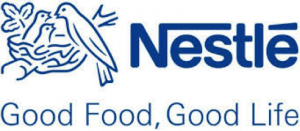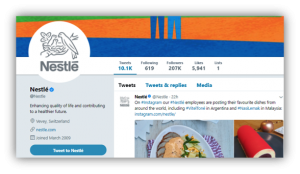
Written by Wan Anis Aqilah
About Nestle
Nestle is the world’s largest food and beverage manufacturer. Headquartered in Switzerland, Nestle is present in 191 countries around the world. Since 1912, Nestle have been nourishing Malaysians through their quality brands and products like MILO, MAGGI, NESCAFE and KITKAT, whilst maintaining Halal excellence and integrity. This is in line with promise of delivering GOOD FOOD, GOOD LIFE to all.
Nestle’s purpose is enhancing quality of life and contributing to a healthier future. They want to help shape a better and healthier world. They also want to inspire people to live healthier lives and that is how they contribute to society while ensuring the long-term success of their company.
Medium of communication
Nestle has several communication channels which are social media like Facebook, twitter and also Instagram. These social media are purposely to keep all the consumers updated with latest products, event and news. Social media also have been a place for consumers to lodge complain and give any feedbacks and share their pictures and stories with Nestle.


For the international communication, Nestle is using Email to keep all the formal communication among clients and also among the corporate clients.
Nestle also using simple and quick communication channel which is mobile phone instant messaging; Whatsapp within the department to discuss some issue and deliver quick information and breaking news.

Other than that, Nestle also using Skype as for a conference meeting within internal and worldwide communication. Skype is so useful for business which makes the communication easier rather than travel abroad. Video conferencing was held using Skype platform communication.
The most main portal for Nestle is their own official website which summarized all the achievements, contribution, awards, news, press release and CSR projects which can be visited by everyone around the world. Nestle always keep their website updated with the latest information and news.
Challenges
Nestle faced numbers of significant business challenges and risks.
- Consumer dynamics and preferences
- Speed and success of innovation
- Brand and marketing effectiveness
- Retailer consolidation and power, inc. private label
- Emerging market strategy and execution
- Competitive intensity
- Environmental sustainability
- Disruptive new technologies and competitors
- Competition for talent
Big company did faced several challenges such are organization management, global versus regional versus local, speed to take decisions, cultural differences, latency (from the differences in the time zones) and language barriers. Nestle also have their own competitors like Unilever, Cadbury, Danone and so forth.
Nestle also faced boycott issue. The first boycott against Nestle was launched in the United States in 1977. It spread in the United States, and expanded into Europe in the early 1980s. It was due to the concern about Nestle “aggressive marketing” of breast milk substitutes, particularly in the third world countries. The boycott is based on the claim by the organizers that the use of the breastmilk substitutes represent a health risk for infants as they encourage breast milk for new-born.